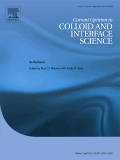
CURRENT OPINION IN COLLOID & INTERFACE SCIENCE
Scope & Guideline
Shaping Perspectives in Colloid and Interface Research
Introduction
Aims and Scopes
- Surfactant Science and Applications:
Exploration of surfactant properties, their interactions, and applications in industries such as cosmetics, pharmaceuticals, and food science. - Colloidal Systems and Nanostructures:
Investigation of colloidal systems including their stability, behavior, and manipulation on a nanoscale, with emphasis on engineering novel materials. - Rheology and Dynamics:
Study of the rheological properties and dynamics of complex fluids, including foams, emulsions, and gels, to understand their behavior in various applications. - Interfacial Phenomena:
Examination of the physical and chemical processes occurring at interfaces, including adsorption, self-assembly, and phase behavior. - Biological and Environmental Applications:
Research into the role of colloids and interfaces in biological systems and environmental processes, such as drug delivery and pollutant remediation.
Trending and Emerging
- Biosurfactants and Sustainable Chemistry:
An increasing number of studies focus on biosurfactants, highlighting their potential for sustainable applications in various industries, including food and pharmaceuticals. - Machine Learning and AI Applications:
The integration of machine learning and artificial intelligence in the design and optimization of colloidal systems and surfactant formulations is gaining traction, indicating a technological shift. - Advanced Characterization Techniques:
Emerging themes include the use of advanced characterization techniques, such as neutron and synchrotron scattering, to uncover new insights into the behavior of colloids and interfaces. - Interfacial Engineering for Biomedical Applications:
There is a growing emphasis on the engineering of interfaces for biomedical applications, particularly in drug delivery systems and antimicrobial surfaces. - Complex Systems and Self-Assembly:
Research into complex systems and self-assembly processes is on the rise, exploring the behavior of multi-component systems and their potential applications in material science.
Declining or Waning
- Traditional Surfactants Over Biosurfactants:
There is a noticeable shift away from studies focused solely on traditional surfactants towards the exploration of biosurfactants and their sustainable applications. - Static Analysis of Colloidal Systems:
Research that primarily focuses on static properties of colloidal systems has decreased, as the field increasingly emphasizes dynamic properties and real-time behavior. - Conventional Emulsion Stabilization Techniques:
Interest in conventional emulsion stabilization methods appears to be waning, with a growing preference for innovative techniques such as using microgels and nanostructures.
Similar Journals
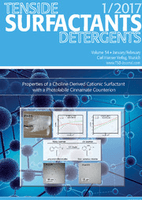
TENSIDE SURFACTANTS DETERGENTS
Unveiling Innovations in Surfactant ApplicationsTENSIDE SURFACTANTS DETERGENTS, published by WALTER DE GRUYTER GMBH, is a pivotal journal in the fields of Chemical Engineering, Chemistry, and Condensed Matter Physics, providing a unique platform for the dissemination of high-quality research since its inception in 1986. With an ISSN of 0932-3414 and an E-ISSN of 2195-8564, this journal has established a significant presence in the academic community, particularly in Germany. Although it currently does not offer Open Access, it remains a valuable resource for researchers seeking to enhance their understanding of surfactants and detergents and their applications in various industries. In the latest Scopus rankings, the journal holds positions in the 35th percentile for General Chemistry and Chemical Engineering, indicating its role in the global research landscape. TENSIDE SURFACTANTS DETERGENTS continues to foster innovation through rigorous peer-reviewed articles and research findings, making it an essential reading for professionals and students aiming to deepen their knowledge and impact in these dynamic fields.

JOURNAL OF SURFACTANTS AND DETERGENTS
Illuminating the Future of Surfactant TechnologyJournal of Surfactants and Detergents, published by Wiley, is a prominent peer-reviewed journal dedicated to advancing scientific knowledge in the field of surfactants, detergents, and their applications. With an ISSN of 1097-3958 and an E-ISSN of 1558-9293, this journal serves as an essential resource for researchers, industry professionals, and students specializing in Chemical Engineering, Physical and Theoretical Chemistry, and Materials Science. Since its inception in 1998, the journal has fostered innovative research and multidisciplinary collaboration, reflected in its current Q3 ranking in several Scopus categories. Although it operates under a traditional publishing model, the journal's robust research contributions continue to engage a wide audience eager to explore the latest developments in surfactant and detergent science. As a key player in the field, the journal not only publishes cutting-edge research but also facilitates dialogue and knowledge exchange, making it an invaluable asset for anyone invested in the chemistry of surfaces and interfaces.

Soft Matter
Pioneering Insights into Soft Matter ScienceSoft Matter, published by the Royal Society of Chemistry, stands as a premier journal in the interdisciplinary field of soft matter science, encompassing studies in materials that are neither entirely solid nor liquid, such as polymers, colloids, and biological materials. With an impressive impact factor indicative of its relevance and citation frequency, Soft Matter has secured a notable position in the academic community, achieving Q1 status in both Chemistry (miscellaneous) and Condensed Matter Physics in 2023. It ranks #102 out of 434 in Condensed Matter Physics and #114 out of 408 in General Chemistry, placing it firmly in the 76th and 72nd percentiles respectively. Since its inception in 2005, the journal has dedicated itself to advancing the understanding of soft materials through high-quality research articles, reviews, and technical notes. Its comprehensive scope invites contributions from both fundamental and applied perspectives, making it an essential resource for researchers, professionals, and students alike. Access to cutting-edge findings and innovative methodologies in this rapidly evolving field is critical for fostering new discoveries and applications, underscoring the journal's vital role in the academic discourse.
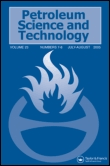
PETROLEUM SCIENCE AND TECHNOLOGY
Innovating solutions for a sustainable energy future.PETROLEUM SCIENCE AND TECHNOLOGY, published by Taylor & Francis Inc, is a pivotal journal dedicated to advancing the multidisciplinary field of petroleum engineering and related technologies. With an ISSN of 1091-6466 and an E-ISSN of 1532-2459, this journal serves as a vital platform for disseminating research in areas ranging from geotechnical engineering to energy technology. As of 2023, it is recognized in the Q3 quartile across several categories, including Chemical Engineering and Fuel Technology, signifying its respectable standing within the academic community. With a convergence timeline from 1997 to 2024, the journal continuously addresses crucial issues in the energy sector, making it essential reading for researchers, industry professionals, and policy-makers alike. Although not an open access journal, its rigorous peer-reviewed articles contribute significantly to the advancement of knowledge and innovation within these fields, reflecting the journal's commitment to promoting scientific understanding and practical applications.
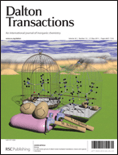
DALTON TRANSACTIONS
Catalyzing Collaboration in Chemical ResearchDALTON TRANSACTIONS, published by the esteemed Royal Society of Chemistry, is a premier journal in the field of Inorganic Chemistry, recognized for its significant contributions to advancing research and scholarship since its inception in 2002. With an impressive Impact Factor and ranked in the Q1 category, it holds a notable position at Rank #21 out of 79 within its Scopus category, highlighting its reputation for excellence and influence in the scientific community. This journal provides a platform for disseminating high-quality research, reviews, and communications related to all aspects of inorganic chemistry, fostering collaboration and innovation among researchers, professionals, and students alike. Although it does not offer open access, its robust selection process and commitment to scholarly integrity ensure that published works are of the highest standard. For those passionate about inorganic chemistry, DALTON TRANSACTIONS serves as an essential resource, fostering a deeper understanding of the field and its applications.

Polysaccharides
Exploring the Frontier of Polysaccharide ResearchPolysaccharides is a leading academic journal published by MDPI, specializing in the interdisciplinary field of polysaccharide research. Since its inception in 2020, this Open Access journal aims to facilitate the dissemination of groundbreaking research in materials science, chemistry, and engineering. With an impressive ranking among the top-tier journals—holding the 29th position in Engineering, the 20th in Chemistry, and the 42nd in Materials Science according to Scopus—it offers a significant platform for researchers and professionals seeking to enrich their understanding of polysaccharides' properties, applications, and innovations. The journal welcomes contributions that advance knowledge in polysaccharide chemistry, structural analysis, and various applications in pharmaceuticals, food sciences, and biomaterials. Located in the heart of Basel, Switzerland, Polysaccharides is poised to be a critical resource for anyone looking to stay at the forefront of polysaccharide research and applications, with publications openly accessible to a global audience.

RHEOLOGICA ACTA
Contributing to the Evolution of Materials EngineeringRHEOLOGICA ACTA, established in 1958 and published by Springer, is a premier journal dedicated to advancing the understanding of rheological behavior in materials. With an impressive impact factor reflected in its Q2 rankings across multiple disciplines, including Condensed Matter Physics, Materials Science, and Mechanics of Materials, this journal serves as an essential resource for researchers, professionals, and students alike. As a key publication in its field, RHEOLOGICA ACTA disseminates high-quality research articles, reviews, and case studies that contribute to the understanding of complex fluid behavior and material properties. Though it operates under a subscription model, the depth and breadth of the content it provides ensures that it remains a vital part of the academic dialogue surrounding materials science and engineering. For those seeking to deepen their expertise, RHEOLOGICA ACTA is indispensable, fostering innovation and progress in the ever-evolving landscape of material characterization and application.
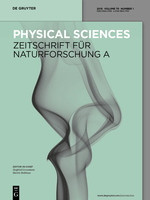
ZEITSCHRIFT FUR NATURFORSCHUNG SECTION A-A JOURNAL OF PHYSICAL SCIENCES
Pioneering Insights in Theoretical ChemistryZEITSCHRIFT FUR NATURFORSCHUNG SECTION A - A JOURNAL OF PHYSICAL SCIENCES is a distinguished journal published by Walter de Gruyter GmbH, based in Germany, that serves as a vital platform for research in the realms of mathematical physics, physical and theoretical chemistry, and broader disciplines within physics and astronomy. Established in 1946, this journal has been a cornerstone for scientists and researchers, providing rigorous peer-reviewed articles that push the boundaries of knowledge in physical sciences. With a notable 2023 Scopus ranking reflecting its respected position in the field—Q3 in mathematical physics, physical and theoretical chemistry, and miscellaneous physics and astronomy—this journal not only emphasizes high-quality research but also enhances the visibility and impact of contributions within these areas. Although it does not currently offer open access, the insights shared in its pages are invaluable for advancing academic inquiry and sparking interdisciplinary collaborations. As it looks ahead to 2024, ZEITSCHRIFT FUR NATURFORSCHUNG SECTION A continues to invite contributions that align with its mission to foster an understanding of complex physical phenomena, making it an essential resource for academics, professionals, and students alike.

SURFACE AND INTERFACE ANALYSIS
Pioneering Research in Nanoscale PhenomenaSURFACE AND INTERFACE ANALYSIS, published by WILEY in the United Kingdom, is a renowned journal specializing in the examination of nanoscale phenomena and the properties of surfaces and interfaces across various materials. With a focus on advancing the fields of Chemistry, Condensed Matter Physics, and Materials Science, this journal has established itself as a critical resource since its inception in 1979, bridging over four decades of scientific discourse. Notably, it holds a commendable position in the Scopus rankings, emerging in the 2023 Q3 quartile across multiple categories, including Chemistry (miscellaneous) and Surfaces, Coatings, and Films. Although it does not currently offer Open Access, SURFACE AND INTERFACE ANALYSIS remains pivotal in disseminating high-quality research, providing an essential platform for academic scholars, industry professionals, and students aiming to deepen their understanding of surface phenomena and material characteristics. Its comprehensive coverage of innovative methodologies, experimental results, and theoretical insights reaffirm its significance in the scientific community.
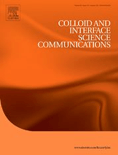
Colloid and Interface Science Communications
Pioneering Insights into Colloidal Interactions and ApplicationsColloid and Interface Science Communications is a prestigious peer-reviewed journal published by Elsevier, specializing in the vibrant fields of colloid and surface science, along with biotechnology. With an impressive open access policy initiated in 2022, this journal ensures wide dissemination of groundbreaking research. Its impact is reflected in its high standings within various Scopus category quartiles—ranked Q2 in Biotechnology and Colloid and Surface Chemistry, and Q1 in Materials Chemistry, Physical and Theoretical Chemistry, as well as Surfaces, Coatings and Films for 2023. Furthermore, it boasts exceptional Scopus rankings, including a top percentile position in several materials science categories, indicating its significant contribution to the scientific community. Published in the Netherlands, Colloid and Interface Science Communications aims to foster knowledge sharing and collaboration by providing a platform for innovators and researchers to explore cutting-edge developments in surface phenomena and materials interactions. As a key resource for researchers, professionals, and students alike, it plays a critical role in advancing our understanding and application of colloidal and interface science.